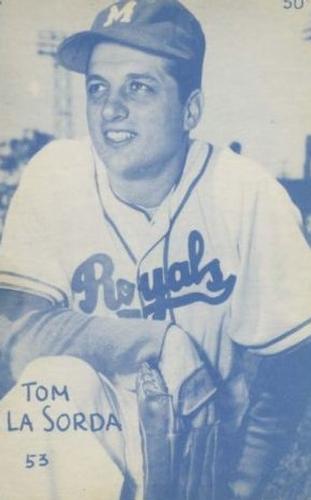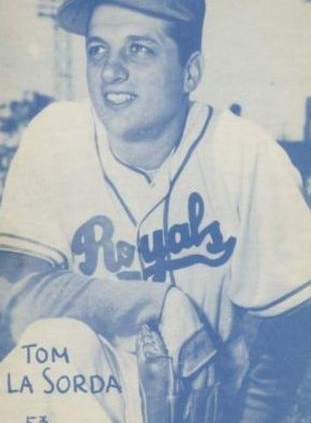May 31, 1948: Tommy Lasorda strikes out 25, records game-ending hit for Schenectady
 America’s Memorial Day festivities in 1948 included parades honoring fallen veterans and doubleheaders graced by the heroics of World War II comrades-in-arms. At Shibe Park in Philadelphia, former Navy and Marine Corps pilot Ted Williams drove in three runs in a win over the hometown A’s. Cincinnati Reds portsider Ken Raffensberger, inducted into the Navy on the cusp of V-E Day,1 came a Nippy Jones single away from no-hitting the Cardinals at Crosley Field, and the New York Giants salvaged a split with the Brooklyn Dodgers at Ebbets Field, thanks to a pair of two-run homers by former Navy Specialist First Class Johnny Mize.2
America’s Memorial Day festivities in 1948 included parades honoring fallen veterans and doubleheaders graced by the heroics of World War II comrades-in-arms. At Shibe Park in Philadelphia, former Navy and Marine Corps pilot Ted Williams drove in three runs in a win over the hometown A’s. Cincinnati Reds portsider Ken Raffensberger, inducted into the Navy on the cusp of V-E Day,1 came a Nippy Jones single away from no-hitting the Cardinals at Crosley Field, and the New York Giants salvaged a split with the Brooklyn Dodgers at Ebbets Field, thanks to a pair of two-run homers by former Navy Specialist First Class Johnny Mize.2
Arguably the most memorable performance on a baseball diamond that day took place 170 miles north of Flatbush, in Schenectady, New York, and it too came courtesy of a former soldier. In the nightcap of a Can-Am League twin bill between the hometown Blue Jays and Amsterdam Rugmakers, Schenectady’s Tommy Lasorda clubbed a game-ending single in the 15th inning – after pitching a 25-strikeout complete game.
Signed at age 17 by the Philadelphia Phillies, Lasorda was a southpaw pitcher-first baseman for the Concord Weavers of the Class D Carolina State League in 1945. Drafted into the Army, he played for teams representing Fort Meade and Fort McClellan in 1946 and Fort Jackson the following spring. Within a few weeks after fanning 20 during a game in early May of 1947,3 Lasorda was a civilian pawing the rubber for a nearby semipro team.4 He moved on to Camden in the Palmetto semipro league, earning $150 to $200 a week while serving in the Army Reserve at the Columbia Air Station. “The rave among pitchers in the Mid-State and Central Carolina [semi-pro] leagues,” “the little [5-feet-8] portsider” capped off his busy year with a pennant-clinching no-hitter on the final day of the Palmetto League season.5
Welcomed back into the Phillies organization for the 1948 season, Lasorda was pingponged during spring training from their Dover farm team to affiliates in Utica, Kinston, and finally Schenectady.6 The “crafty lefthander with a good fastball and tricky hook” was a welcome addition to the otherwise all-right-handed pitching corps of the defending Class C Can-Am League champions.7
Lasorda debuted for the Blue Jays in a 7-1 loss to the Trois-Rivières Royals in Quebec but impressed with both his arm and his bat. Relieving a youngster unable to make it out of the first inning of his first professional start, Lasorda allowed one run on just one hit and six walks over 7⅓ innings while fanning eight and going 2-for-3 at the plate.8
The following week, Lasorda experienced both sides of the same coin, hitting a walk-off two-run pinch-hit home run out of Schenectady’s McNeary Stadium to beat the Oneonta Red Sox in one game and surrendering a game-ending 12th-inning blast in a loss to the Rome Colonels in another.9 His nine strikeouts in that defeat, over five innings of relief, earned Lasorda the confidence of Schenectady manager Lee Riley, a one-hit wonder with the 1944 Phillies and the father of future NBA Hall of Fame coach Pat Riley. On May 28 Riley sent Lasorda out for his first start of the season, at home against Rome. He went the route in a 4-3 loss, allowing only five hits while striking out seven.
After a shutout win over Rome the next day, the Blue Jays on May 30 swept the first of a pair of home-and-home doubleheaders with Amsterdam, a New York Yankees affiliate.10 They registered an 11-5 victory over the Rugmakers in the afternoon opener of their Memorial Day twilight-night doubleheader, a game played in Amsterdam. With so many games crammed into the holiday weekend, Riley had none of his regular starters available to take the mound for the nightcap back home in Schenectady. The Jays skipper turned to Lasorda, on just two days’ rest.
A holiday crowd of 4,064 paid their way into McNeary Stadium to see Lasorda square off under the lights at against Amsterdam’s Fred Prior, a double-digit winner for Class D Easton the year before who had yet to reach his 20th birthday.11 Nobody in Amsterdam skipper Jim McLeod’s starting lineup ever reached the major leagues, but several Rugmakers had served in the Army during and/or after the war. Backstop Chris Danish had been a B-29 pilot, shortstop Gordon Johnston was stationed in Germany after hostilities ended, first baseman John Recco was an Army Special Forces member, and third baseman Ralph Gibbs Jr. had served in the Navy.12 McLeod had been a GI as well.13
Schenectady’s position players weren’t major-league material either, but several of their number had also taken up arms for their country. In addition to Lasorda, center fielder Larry Rush served in the Army, third baseman Joseph Palkovitz had been in the Navy in the South Pacific, and Lasorda’s batterymate, John Oldak, was an ex-Marine.14
Calling balls and strikes was Al Zingone, a veteran not of the armed forces, but of the American Basketball League, a late-1920s/early-1930s precursor to the NBA.15
The Blue Jays struck first, scoring a run in the opening frame on a pair of walks, a sacrifice, and an infield single by the team’s top run producer, Ernie Woods. Amsterdam tied the score in the third and went ahead in the fourth on a two-run home run to left by Danish, one of only four he hit in over 700 minor-league plate appearances.
Down 3-1 entering the bottom of the fifth, the Blue Jays responded. Palkovitz doubled to left leading off and scored on a one-out single to left by Lasorda. Down to their last out, Rush, a teammate of Lasorda’s three years earlier with Concord, belted a triple to center field. Lasorda, considerably nimbler than he was 35 years later as manager of the World Series champion Los Angeles Dodgers, scored, tying the game. Rush was left stranded at third when the next batter popped out.
Tied 3-3 after five innings, the game apparently reached the end of regulation, based on the game summary in the Schenectady Gazette.16 The Gazette’s mention that morning of the nightcap’s 7:30 P.M. starting time said nothing of the game’s intended length;17 it may have been shortened to allow fans to get home at a reasonable hour. For those who stayed until the end, it turned out to be a very long night.
Beginning in the second inning, Lasorda started a string of strikeouts for the final out of each inning. He did it in the third, fourth, and all the way to the seventh. After that, he began racking up strikeouts at a greater pace. Between the eighth and 10th, Lasorda struck out six consecutive batters. (In yet another basketball connection in this game, one of Lasorda’s eighth-inning victims was a pinch-hitter, John Drew, who between seasons moonlighted as a member of the bearded House of David touring basketball team.18)
Triumph looked certain for the Blue Jays when they loaded the bases on three walks in the 11th but a one-out fielding gem by Johnson at shortstop resulted in a force out at home. Schenectady hopes were dashed when the next batter popped out.
Amsterdam broke through for a pair of runs in the 12th, but Schenectady responded with a pair of home runs. The first came when Rugmaker center fielder Joe Ferra failed to make a shoestring catch on a ball hit by Rush, allowing Rush to circle the bases. A blast over the right-field fence by Woods brought the Blue Jays even once again.
Entering the 15th, both Lasorda and Prior were still in the game. By the time Lasorda finished holding Amsterdam scoreless in that frame, or possibly even earlier (the Schenectady Gazette game summary doesn’t say when), he notched his 25th strikeout. Though shy of the all-time minor-league record of 30, Lasorda’s total topped fellow southpaw Earl Leslie Jones’s Can-Am League record of 22 in a game, set in 1942.19 Every Rugmaker went down on strikes at least once, with left fielder George Morehouse striking out in six of his seven at-bats.20 Despite his gaudy numbers, Lasorda was far from commanding the strike zone. He surrendered 12 walks, roughly one for every two strikeouts.
Finally, in the bottom of the 15th, the Blue Jays pushed across a winning run. With two runners on, Lasorda rapped a single to left, ending the four-hour-plus marathon.21 Holding Amsterdam to 5 runs on 10 hits, Lasorda earned his first win as a Blue Jay and first as a professional since before V-J Day in 1945.22
Describing Lasorda’s outsized contribution to the Schenectady win, the Ithaca Journal claimed he “had the rest of the … Blue Jays practically eating out of his hand.”23 The arm that hand was attached to must have felt as if it was falling off. Many years later, Lasorda, with the help of longtime friend Bobby Valentine, calculated that he threw 300 pitches in this game.24
Somehow, four days later Lasorda was back on the mound. He struck out 13 over 10 innings in an 11-inning win over the Pittsfield Electrics.25 Seemingly immune to the catastrophic damage twenty-first century pitchers would expect to suffer with that kind of workload, Lasorda finished the season 9-12 (.429) for the fifth-place Blue Jays, with a 4.64 ERA and a career-high 195 strikeouts. After working his way up the Dodger farm system, Lasorda became a major leaguer in the summer of 1954, making 26 appearances for Brooklyn and the Kansas City Athletics over three seasons.
Acknowledgments
This article was fact-checked by Ray Danner and copy-edited by Len Levin.
Sources
In addition to the sources cited in the Notes, the author consulted Alan Stowell’s Tom Lasorda biography and Thomas J. Brown’s Bobby Valentine biography, both in the SABR Biography Project, and a game summary published in the Schenectady Gazette. He also obtained pertinent information from the Baseball-Reference.com, statscrew.com, and Retrosheet.org websites.
Notes
1 “The Phils Lose a Hurler,” Kansas City Times, May 8, 1945: 9. With hostilities in the Pacific ending in August 1945, Raffensberger served only five months before being discharged.
2 Nora Belodeau, “Hall of Fame Military Spotlight Series: Johnny Mize,” Act of Valor Award website, June 19, 2023, https://www.actofvaloraward.org/post/hall-of-fame-military-spotlight-series-johnny-mize.
3 “Fort Jackson Proves Too Much for Local Team,” Florence (South Carolina) Morning News, May 8, 1947: 6.
4 Lasorda was called “Johnny” by a local newspaper in the earliest account that the author found of Lasorda pitching for that team, Joanna. “Joanna Topples Laurens, 3 to 2,” Greenville (South Carolina) News, May 28, 1947: 12.
5 “Folks, Facts and Figures,” Greenville News, July 2, 1947: 9; “Camden Wins Palmetto Title,” Columbia (South Carolina) State, August 27, 1947: 9.
6 “Seven Regulars Will Return to Dover This Year,” Wilmington (Delaware) Morning News, March 26, 1948: 40; “Two New Twirlers – One a Leftie – Report to Blue Jays’ Team,” Schenectady Gazette, April 30, 1948: 28; “Kingston Eagles Sign Several New Players,” Raleigh (North Carolina) News and Observer, April 18, 1948: 13. The Wilmington Morning News mistakenly reported that Lasorda had pitched for Dover the previous season.
7 “Kingston Eagles Sign Several New Players.”
8 “Jays Lose to Royals by 7 to 1,” Schenectady Gazette, May 11, 1948: 16. The youngster was 19-year-old Thadeus “Ted” Baryiewski, who later served in the US Army during the Korean War. “Thadeus Baryiewski,” Newark (New Jersey) Star-Ledger, https://obits.nj.com/us/obituaries/starledger/name/thadeus-baryiewski-obituary?id=13637284, accessed December 5, 2024.
9 Jack Hugerich, “LaSorda’s Homer Gives Jays Victory in Opener of Twin-Bill,” Schenectady Gazette, May 17, 1948: 17; “Jays Lose to Rome in 12th Inning,” Schenectady Gazette, May 20, 1948: 33.
10 Jack Hugerich, “Blue Jays Beat Rome, Divide with Rugmakers in Weekend Tilts,” Schenectady Gazette, May 31, 1948: 10. Separated by less than 20 miles, a home-and-home doubleheader for Schenectady and Amsterdam teams would have been just as feasible, if not more so, as one held on July 8, 2000, between the Yankees and the New York Mets, whose ballparks were about half as far apart but with significantly more traffic in between.
11 Jack Hugerich, “LaSorda Singles in 15th to Give Jays Victory Over Amsterdam,” Schenectady Gazette, June 1, 1948: 14. Baseball-Reference is silent on Prior’s exact date of birth, noting only that he was born in 1929.
12 “Christopher A. Danish,” Asbury Park (New Jersey) Press, May 4, 1999: 7; “Gordon Johnston,” Portland (Maine) Press Herald, June 10, 2009: B13; “John Recco,” Boston Globe, September 6, 2020: A25: “Gibbs Is Promoted,” Beckley (West Virginia) Post-Herald and Register, March 9, 1969: 3.
13 Gary Bedingfield, “Baseball in Wartime,” Baseball in Wartime website, https://www.baseballinwartime.com/those_who_served/those_who_served.htm, accessed December 3, 2024.
14 “Lawrence C. Rush,” Allentown (Pennsylvania) Morning Call, April 26, 2016: A12; “I. Joseph Palkovitz,” Rest Haven Funeral Home and Cemetery, https://www.rsthvn.com/obituaries/i-joseph-palkovitz, accessed December 5, 2024; “John Thomas Oldak,” US Department of Veterans Affairs, Veterans Legacy Memorial, https://www.vlm.cem.va.gov/JOHNTHOMASOLDAK/57DFF15, accessed December 6, 2024; “John Recco,” Boston Globe, September 6, 2020: A25.
15 “Al Zingone,” Pro Basketball Encyclopedia, https://probasketballencyclopedia.com/player/al-zingone/, accessed December 5, 2024.
16 “LaSorda Singles in 15th to Give Jays Victory Over Amsterdam.”
17 Hugerich, “Blue Jays Beat Rome, Divide with Rugmakers in Weekend Tilts.”
18 Frank Mooney, “Policeman Retires, Marking End of Era,” New York Daily News, August 19, 1984: B40.
19 Clarence “Hooks” Iott of the Paragould (Arkansas) Browns struck out 30 in a 16-inning Northeast Arkansas League game in 1941. Tim Hagerty, “The Time a Pitcher Struck Out 30 Batters in One Game,” The Sporting News, July 15, 2015, https://www.sportingnews.com/us/mlb/news/minor-league-baseball-30-strikeouts-one-game-hooks-clarence-iott-newport-paragould-arkansas-mann-field/1nd7m3ath3o0n19rsndkqwq7qt; “LaSorda Singles in 15th to Give Jays Victory Over Amsterdam”; “Sets New Record with 22 Strikeouts,” Dayton (Ohio) Herald, September 3, 1942: 21.
20 “LaSorda Singles in 15th to Give Jays Victory Over Amsterdam.”
21 The resolution of the scanned Schenectady Gazette box score at genealogy.com is not sharp enough to tell how many minutes over four hours the game lasted.
22 “Concord Beat Indians, 8 to 4,” Winston-Salem (North Carolina) Journal, June 29, 1945: 14. That victory came for Concord in a contest with the Lexington (Virgina) A’s – one that took place 170 years after the Battles of Lexington and Concord, the first military engagements of the American Revolution.
23 “Pitcher Whiffs 25 in One Game,” Ithaca Journal, June 1, 1948: 10.
24 Tim Hagerty, “Tom Lasorda’s 25-Strikeout Game,” The Sporting News, December 7, 2014, https://www.sportingnews.com/au/mlb/news/tommy-lasorda-25-strikeouts-schenectady-blue-jays-phillies-dodgers/yu3fb2vat2zp15iktzv8u7ok2. Lasorda scouted Valentine while the Connecticut native was a college ballplayer at the University of Southern California, and later managed him on the 1968 Ogden Dodgers of the Pioneer League and the 1969 through 1971 Spokane Indians of the Pacific Coast League.
25 “Woods’ Homer in 11th Gives Jays 11-8 Triumph Over Pittsfield,” Schenectady Gazette, June 5, 1948: 14.
Additional Stats
Schenectady Blue Jays 6
Amsterdam Rugmakers 5
15 innings
McNeary Stadium
Schenectady, NY
Corrections? Additions?
If you can help us improve this game story, contact us.


